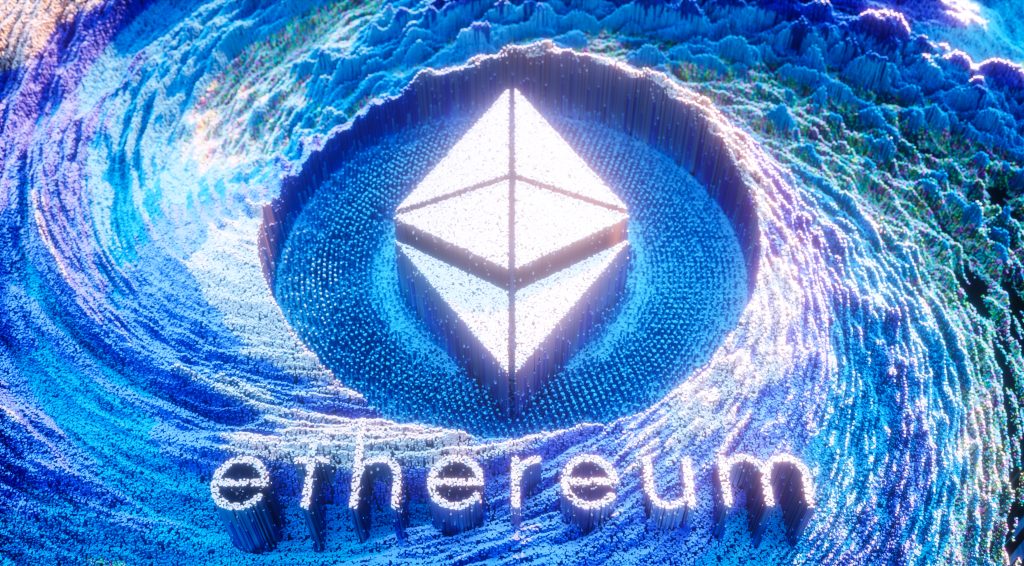Are you curious about Ethereum and how it’s making waves in the digital world? You’re in good company! Ethereum is a groundbreaking blockchain platform that has captured the attention of many, thanks to its innovative features and the vast range of applications it enables. In this comprehensive guide, we’ll dive into the world of Ethereum, helping you understand how it’s revolutionizing industries and empowering individuals like never before.
A Brief History of Ethereum
In 2013, a young Russian-Canadian programmer named Vitalik Buterin set out to create a blockchain platform with more potential than just processing transactions. His vision was to establish a decentralized platform where developers could create and deploy a wide variety of applications. Together with a team of talented co-founders, including Charles Hoskinson, Mihai Alisie, and Anthony Di Iorio, they launched Ethereum in July 2015.
Since its inception, Ethereum has grown exponentially, evolving into one of the most prominent blockchain platforms in existence. It has attracted developers and investors alike, with numerous projects and tokens built on its network. From the initial success of its crowdfunding campaign to the launch of the Enterprise Ethereum Alliance, Ethereum has consistently demonstrated its commitment to fostering innovation and pushing the boundaries of what’s possible with blockchain technology.
Ethereum vs. Bitcoin: Key Differences


Bitcoin has long been the poster child of the cryptocurrency world, but Ethereum offers something different. While both platforms rely on blockchain technology, Ethereum expands on Bitcoin’s primary focus on digital currency transactions. Here are some key differences that set Ethereum apart from Bitcoin:
- Programmability: Ethereum’s most notable feature is its programmability, which allows developers to create smart contracts and decentralized applications (DApps) that run on its network. This opens up a world of possibilities for various use cases, from decentralized finance to digital identity management.
- Smart Contracts: Unlike Bitcoin, Ethereum enables the creation of self-executing agreements called smart contracts. These contracts facilitate trustless interactions between parties, automating processes and reducing the need for intermediaries.
- Decentralized Applications (DApps): Ethereum’s versatility has led to the development of numerous DApps across different industries. These applications leverage the power of the blockchain to offer decentralized, transparent, and secure services, something that Bitcoin was not initially designed to support.
- Consensus Mechanism: While both Ethereum and Bitcoin currently use a Proof-of-Work (PoW) consensus mechanism, Ethereum is in the process of transitioning to a more environmentally friendly and scalable Proof-of-Stake (PoS) system, which will further differentiate it from Bitcoin.
- Development Community: Ethereum boasts a vibrant and ever-growing development community, focused on building innovative solutions on its platform. This has led to a flourishing ecosystem of projects and tokens, demonstrating the vast potential of Ethereum’s technology.
Understanding Ethereum’s Core Components
Ethereum is a powerhouse in the blockchain space, and its core components are what make it so remarkable. Let’s dive into these fundamental elements and discover what sets Ethereum apart.
Ether (ETH): As Ethereum’s native cryptocurrency, Ether is more than just a digital currency. It acts as the fuel for the Ethereum network, powering transactions, smart contracts, and decentralized applications. Ether is essential for developers to create and deploy applications on the platform, as it covers the costs associated with computational power and data storage.
Smart Contracts: These are self-executing agreements written in code that live on the Ethereum blockchain. Smart contracts automatically execute when predetermined conditions are met, streamlining various processes and reducing the need for intermediaries. They have the potential to revolutionize industries like finance, logistics, and real estate, to name a few.
Decentralized Applications (DApps): Ethereum’s platform enables developers to build and deploy DApps that offer a wide range of services. These applications are designed to be transparent, secure, and resilient to censorship, thanks to the decentralized nature of the blockchain. DApps are transforming the way we interact with digital services, paving the way for a more equitable and accessible internet.
The Power of Decentralization and the Ethereum Blockchain
Decentralization is a core tenet of Ethereum’s design, offering numerous benefits that set it apart from traditional systems. Here’s a closer look at the power of decentralization and its role in the Ethereum blockchain:
- Enhanced Privacy: By distributing data across numerous nodes, Ethereum makes it difficult for any single entity to access or control a user’s information, ensuring privacy and security for its users.
- Censorship Resistance: Decentralization allows Ethereum to resist censorship attempts, as no single entity has control over the entire network. This empowers individuals and organizations to operate with greater freedom and autonomy.
- Increased Accessibility: Ethereum’s decentralized nature means that anyone with an internet connection can access its platform and services. This democratizes access to resources and opportunities, especially for those in underserved areas.
- Greater Security: The Ethereum network is secured by a vast network of nodes, which work together to validate transactions and maintain the integrity of the blockchain. This distributed security model makes it extremely difficult for attackers to compromise the network.
- Reduced Points of Failure: With data distributed across many nodes, Ethereum is more resilient to failures and attacks. This makes the network more reliable and robust, ensuring its long-term viability.
Real-World Use Cases and Applications of Ethereum


Ethereum’s versatility has led to an impressive range of real-world applications. In this section, we’ll explore some of the most transformative use cases and industries where Ethereum is making an impact.
#1 Decentralized Finance (DeFi)
Decentralized finance, or DeFi, is a rapidly growing sector within the blockchain space that aims to democratize access to financial services. Built primarily on the Ethereum network, DeFi applications enable users to borrow, lend, trade, and invest without relying on traditional financial institutions. This empowers individuals around the world, particularly those who have been historically underserved by the traditional banking system.
#2 Stablecoins and Cross-Border Payments
Ethereum has facilitated the growth of stablecoins, which are cryptocurrencies pegged to stable assets like fiat currencies. These digital tokens offer a viable alternative for cross-border payments, reducing costs and processing times while ensuring security and transparency. With Ethereum’s smart contract capabilities, stablecoins can be easily integrated into various applications and services, streamlining international transactions.
#3 Building a More Private and Secure Internet
Ethereum’s decentralized nature offers the potential to build a more private and secure internet. With its innovative technology, Ethereum can help create decentralized identity management systems, allowing users to control their own data and share it selectively. This approach not only enhances privacy but also reduces the risk of identity theft and data breaches.
#4 Supply Chain Management
Ethereum’s blockchain technology can significantly improve supply chain management by bringing transparency, efficiency, and accountability to the entire process. Likewise, one of the use cases of Smart contracts is to automate various stages of the supply chain, ensuring seamless transactions and timely execution. By providing real-time tracking of goods, Ethereum can help prevent fraud and counterfeiting, ultimately benefiting both businesses and consumers.
#5 Tokenization of Assets
Tokenization is the process of converting real-world assets, like real estate or art, into digital tokens on a blockchain. Ethereum’s smart contract capabilities enable the creation and management of these tokens, making it easier to trade, invest, and transfer ownership of assets. Tokenization can improve liquidity, streamline processes, and open up new investment opportunities for a wider audience.
#6 Decentralized Autonomous Organizations (DAOs)
Ethereum enables the creation of Decentralized Autonomous Organizations (DAOs), which are organizations run by code and governed by smart contracts. DAOs operate without centralized management, allowing decision-making to be truly democratic and transparent. This innovative approach has the potential to revolutionize corporate governance, making organizations more resilient, efficient, and responsive to their stakeholders.
By exploring these real-world use cases and applications, it’s clear that Ethereum’s potential goes far beyond cryptocurrency. Its technology is laying the groundwork for a more decentralized, equitable, and accessible future across various industries.
The Merge and Ethereum’s Transition to Proof-of-Stake
The Merge completed on September 15, 2022 is a significant event in Ethereum’s history, marking its transition from a Proof-of-Work (PoW) to a Proof-of-Stake (PoS) consensus mechanism. This change addresses several critical concerns, including energy efficiency and environmental impact. PoW systems, like the one used by Bitcoin, require vast amounts of computational power and energy to maintain network security. In contrast, PoS relies on validators who hold and “stake” the platform’s native currency, Ether, to validate transactions and create new blocks.
This transition not only reduces Ethereum’s energy consumption but also enhances its scalability and security. With PoS, validators are chosen to create new blocks based on the amount of cryptocurrency they hold and are willing to “lock up” as collateral. This incentivizes good behavior and discourages malicious actions, as validators risk losing their staked Ether if they attempt to cheat the system.
Ethereum 2.0: The Future of the Platform


Ethereum 2.0, often referred to as Eth2 or Serenity, is a series of upgrades designed to improve the platform’s performance, security, and scalability. These enhancements will allow Ethereum to handle a larger number of transactions, accommodate more users, and support a broader range of decentralized applications. Some of the key features of Ethereum 2.0 include:
- The transition from PoW to PoS, as discussed in the previous section.
- The introduction of shard chains, which divide the network into smaller, interconnected pieces to distribute the workload and increase transaction processing speed.
- Improvements to the Ethereum Virtual Machine (EVM), enabling more efficient and secure smart contract execution.
These upgrades, when fully implemented, will solidify Ethereum’s position as a leading blockchain platform, capable of transforming industries and driving widespread adoption of decentralized technologies.
The Bottom Line
Ethereum’s potential to revolutionize the digital landscape is undeniable. As a blockchain platform offering programmability, versatility, and a thriving ecosystem of decentralized applications, Ethereum came to disrupt various industries and reshape the way we interact with the digital world. Its ongoing upgrades and advancements, such as the transition to Proof-of-Stake and the Ethereum 2.0 upgrade, further demonstrate its commitment to innovation and sustainability.
Now is the perfect time to explore Ethereum’s potential and consider involving with this revolutionary blockchain platform. Whether you’re an investor, developer, or simply a curious individual, Ethereum offers a wealth of opportunities for growth, learning, and participation in the future of decentralized technology.









